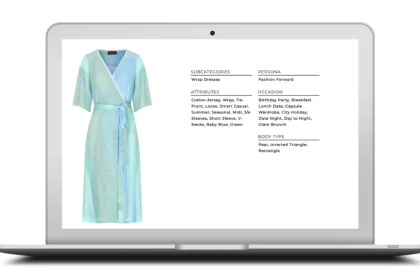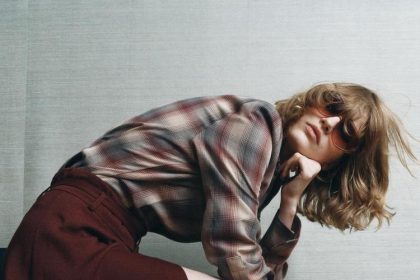The human neck is an organ that, apart from the signs of aging, reveals more facts such as anger, laughter and tension in its veins, facts that are undeniable. Our neck represents both self-confidence and fear in the existence of a person, as a person achieves a powerful ambiguity by covering his neck. Some believe that our faces are not our reality, but our neck expresses our inner truth, and this is where a turtleneck can hide the truths of the body in a strange way.
Since the inception of turtlenecks, neck protection literally means; Either metaphorically or both functions have been used. Looking at the history of the turtleneck, it has been a symbol of power, rebellion, stylishness and modesty.
But the question that may arise for you is how this historical item has become a symbol of power and struggle?!
In this closet article, in addition to pointing out the origin and history of this attractive collar, we have reviewed the use of this bold dress at critical points in history, and we ask you to stay with us until the end of the article. The
The history of the turtleneck
The origin of the turtleneck goes back to medieval Europe, when knights wore it under their chain mail to prevent the chains from rubbing against their necks. But when it comes to the allure of the turtleneck, its earliest traces can be traced back to the 19th century. Apart from the fact that this catchy item was a symbol of Parisian fashion; Due to its practicality, protection and sense of warmth, it was suitable for fishermen and other workers who worked in winter and in cold weather. Precisely for these reasons, the design of this collar was highly noticed and liked by soldiers and sailors, who were a symbol of masculinity and hard work due to their type of work.
But in the early 1900s, with the popularization of the Gibson Girl style, which was derived from a fictional character in a painting, another fate came for this charming collar. Visually portraying the ideal girl of the time, the Gibson Girl was generally envisioned as an active, attractive, and independent woman. Because modesty was one of the main characteristics of Gibson Girl, the ski-collar dress, which was also loved by the working class and humble, opened its foot in this style and became a seductive style from the working man’s uniform.

turtleneck dress; A collar that was a symbol of masculinity
Research on the History of Ski Neck Clothing By the mid-1920s, the turtleneck had become very popular due to its design as well as its use, to the point where it began to develop its own personality. As Troy Patterson pointed out in the New York Times magazine, the English playwright Noël Coward became famous for wearing this model of clothes and a powerful collar. So that his style was quickly copied by young men. It was there that this collar was noticed by creative intellectuals and separated from its practical and utilitarian roots. But it was still accepted as a male item.

Over time, this popular and alluring collar gained a lot of space among college girls who modeled their style on their brothers. But this model was never accepted by men as a cover for women.
In the summer of 1925, fashion writer Mary Marshall wrote in The Cincinnati Enquirer: There’s always been a strict stance on women wearing turtlenecks as a symbol of self-sufficiency and masculinity, and it’s hard for men to accept.This attitude was to the extent that men believed that the wider the collar, the greater their masculinity and masculinity.
Reviewing the history of the arrival of the turtleneck dress in the world of Hollywood
In spite of such attitudes, it was natural that the ski-neck sweater with the symbol of modern American masculinity, Clark Gable; Join the famous American actress. A charming man who rose to fame in the 1930s with a collection of cream-colored turtlenecks that framed his perfectly symmetrical figure.

In the middle of the 20th century, the men’s ski neck became the item we see today, and it was after the end of World War II that women began to openly wear this controversial garment. Its new silhouette was worn by Hollywood actress Jane Mansfield and popularized as an alluring and seductive symbol.

After jeans, the eternal fashion icon Marilyn Monroe has a timeless style in her archive pictures with white trousers and a black turtleneck sweater. In this 1953 Life magazine photo of Marilyn, unlike the most famous photo of Monroe trying to keep her shirt down against the wind, her clothes are properly styled and coded. So that in this photo, she is no longer a passive star, but a responsible, confident, strong and rebellious woman.


Among other fashion icons, Audrey Hepburn is a big Hollywood star who wore a black turtleneck in the movie Funny Face and she herself believed: a black sweater with a turtleneck has a powerful appeal, as she says, “I’m different.”

And this issue strengthened the growing connection of this powerful collar with the educated class, philosophers, artists and free-thinking intellectuals. And the turtleneck became popular as a symbolic tool among intellectuals. With the growth of this attitude, at the end of World War II, when the aesthetic of the cultural renaissance took over Paris and the Western world, Flafessé, inspired by French free-thinking writers, began to wear the iconic ski-neck clothing.
turtleneck dress; From captivating symbol to cultural symbol
In line with the attitude created about this historical collar, in the 70s, it made an interesting connection with the feminist movement. Feminist activists Dorothy Bateman-Hughes and Gloria wore their own unique, simple high-necked blouses, raising their fists in solidarity and protest.

Even now, this photo is one of the most enduring symbolic images in history, representing a historical statement of women’s empowerment and the struggle for equal rights.
With the launch of the women’s liberation movement, these two political activists traveled to different regions and spoke about the women’s liberation movement. And this was while in this decade feminist and civil rights movements rushed towards the heart of ordinary people’s lives. It was there that, both literally and figuratively, the turtleneck became a garment of resistance and struggle, as well as a genderless garment.
If you would like to know more about using the fashion industry to support feminism, visit the fashion industry and feminism article.
Gloria and Dorothy reunited in 2014 and recreated the touching image after years of struggling in front of the Florida photographer’s camera. But this time wisdom and experience are reflected in their smiles. These two feminist warriors continue to lead and inspire generations to come.

Looking at the history of the turtleneck dress, we find that it has become a countercultural fringe piece used to show women’s opposition to traditional female gender roles. The wearing of this dress by feminists carried this message. That “A woman is more than the visual elements of her body, and a woman’s body is not our main focus”.
Marjon Carlos wrote in Vogue magazine in January 2017: “From the past to the present; The image of a black turtleneck sweater, a long knotted fist and an afro hairstyle can inspire and symbolize struggle and strength. An image that has a visual impact, stable and dynamic.
Scream elitism by wearing a black turtleneck
Steve Jobs The late Apple founder asked Japanese fashion designer Issey Miyake to design a long-sleeved black turtleneck sweater for him to become his daily uniform. He asked Issei Miyake to produce 100 black turtlenecks for him to avoid the hassle of choosing an outfit for work.

Although it is unclear whether Jobs intentionally wanted to wear an outfit with a controversial history, it was certainly intended to create an image of his brand. Wearing such a simple dress by a billionaire like him has a deeper meaning and represents crossing the red line. Mr. Khas of the technology world simultaneously rejected the suit and tie, which is considered the formal business attire, at the global level and expressed his sense of fashion through pragmatism and work ethic.
American clothing designer Rick Owens, who has an avant-garde style, a simple dress such as a ski collar has a special place in the wardrobe of this famous designer. As she said recently: “I can’t really spend time picking out my clothes every day, so my clothes have become a kind of uniform. “I have twenty versions of the black turtleneck dress and wear it with sneakers that I designed myself.” In Owens’ mind, the ski collar “A piece of architecture, formal and stubborn” It can turn the body into a powerful fortress.
content Fashion is a platform for conveying meaning through design, Rick Owen’s

the style of female politicians; Part I (History)
Is the choice of politicians a tie or a turtleneck?
It’s not just women in politics who are judged by what they wear. This impressive dress has also come to the aid of sober male politicians at critical moments in history. People who want to be part of the people and with the people in difficult political and social conditions.
French President Emmanuel Macron and his finance minister Bruno Le Maire, when they wanted to announce new regulations on the heating system of offices to face the winter cold, instead of wearing men’s shirts and suits and ties, wore a black turtleneck jacket under the suit. They used their pants.

Since Macron took office in 2017, the president has proven to use the image as a shorthand communication tool. Serge Carrera, a lecturer at the University of Science Po, believes that he uses symbols very elaborately and cleverly. So it’s no surprise that wearing a turtleneck seems to be another strategic choice.
It can be concluded that it is not only women in the field of politics who should think about what to wear in critical moments of history, but it is enough to know what kind of image and attitude will be left behind when we wear clothes.
last word
As mentioned, the turtleneck dress has long been a symbol of subversion and suitable for showing women’s power. A dress that over time and in a time when there was a wide range of gendered clothes became a neutral and genderless item. This dress fought a lot with the way society wanted to say who could wear what and who couldn’t.
Associated with powerful women throughout history, this wardrobe has seen many ups and downs. Perhaps women around the world will keep it in their hearts to tap into the spirit of these influential figures.
But do you think there has ever been a dress as bold as the turtleneck dress throughout history?
References:
www.nytimes.com
www.thegoodtrade.com
www.architecturelab.net
thevoiceoffashion.com
www.ssense.com
RCO NEWS















